AGM vs Flooded Battery, Comprehensive Guide
When it comes to choosing the right battery for your energy storage needs, the debate between AGM and Flooded Batteries A comprehensive understanding is essential. Whether you're powering a solar energy system, an RV, a boat, or using backup power for residential or industrial purposes, knowing the difference between these two battery types can significantly impact performance, longevity, and cost-effectiveness. This guide provides an in-depth analysis of AGM and Flooded Batteries A key aspects to help you make an informed decision.
- Understanding AGM and Flooded Batteries A Technologies
- AGM and Flooded Batteries A Performance Comparison
- AGM and Flooded Batteries A Maintenance Requirements
- AGM and Flooded Batteries A Cost Analysis
- AGM and Flooded Batteries A Environmental Impact
- AGM and Flooded Batteries A Use Cases
- AGM and Flooded Batteries A Pros and Cons Summary
- AGM and Flooded Batteries A Decision Factors
- AGM and Flooded Batteries A Future Outlook
Understanding AGM and Flooded Batteries A Technologies
What Are AGM Batteries?
AGM (Absorbent Glass Mat) batteries are a type of valve-regulated lead-acid (VRLA) battery. They use a glass mat separator that holds the electrolyte in place, preventing leakage and allowing the battery to be maintenance-free. These batteries are sealed and do not require water topping, making them highly user-friendly.
What Are Flooded Batteries?
Flooded lead-acid batteries, also known as wet cell batteries, are the traditional form of rechargeable battery. They consist of lead plates submerged in an electrolyte solution (sulfuric acid and water). Unlike AGM batteries, flooded batteries require regular maintenance, including monitoring and refilling water levels.
AGM and Flooded Batteries A Performance Comparison
Charge and Discharge Efficiency
AGM batteries generally have lower internal resistance, allowing for faster charging and discharging. Flooded batteries, while still effective, typically take longer to recharge and discharge due to higher internal resistance.
Depth of Discharge (DoD)
The depth of discharge refers to how much of a battery's capacity can be used before it needs recharging. AGM batteries often support a deeper discharge compared to flooded batteries, which can significantly enhance performance in cyclic applications like solar power storage.
Lifespan and Cycle Durability
Under proper conditions, AGM batteries tend to have a longer lifespan and higher cycle durability than flooded batteries. However, lifespan can vary depending on usage patterns and maintenance levels.
>>See also Can You Build a 16S2P LiFePO4 Battery with a Single JK 200A BMS
AGM and Flooded Batteries A Maintenance Requirements
Maintenance-Free vs. Manual Maintenance
AGM batteries are considered maintenance-free, eliminating the need to monitor water levels or clean corrosion. This makes them ideal for remote or hard-to-reach installations. Flooded batteries, in contrast, require regular checks and topping off with distilled water.
Safety and Handling
Due to their sealed nature, AGM batteries are safer and less prone to spilling hazardous acid. Flooded batteries must be handled carefully to avoid acid spills, corrosion, and off-gassing of hydrogen during charging.
AGM and Flooded Batteries A Cost Analysis
Upfront Cost
Flooded batteries generally have a lower initial purchase price compared to AGM batteries. This makes them a popular choice for budget-conscious buyers.
Long-Term Value
While AGM batteries cost more upfront, their lower maintenance requirements and longer service life can offer better value over time. The reduced need for frequent replacements and servicing contributes to long-term savings.
AGM and Flooded Batteries A Environmental Impact
Sustainability
AGM batteries produce fewer emissions during operation and are often recyclable. Flooded batteries, due to their need for water and potential for acid leaks, have a higher environmental footprint.
Disposal Considerations
Both battery types must be disposed of responsibly. AGM batteries, being sealed and containing immobilized electrolyte, are generally safer to recycle than flooded batteries.
AGM and Flooded Batteries A Use Cases
Solar Energy Storage
AGM batteries are preferred for solar applications where low maintenance and high efficiency are required. Flooded batteries are also used in solar setups, especially where cost is a primary concern and regular maintenance is feasible.
Recreational Vehicles and Marine Applications
AGM batteries are commonly used in RVs and boats due to their vibration resistance and leak-proof design. Flooded batteries are used in similar applications but may require more frequent upkeep.
Backup Power Systems
For backup power in homes or businesses, AGM batteries offer a more convenient, maintenance-free solution. Flooded batteries can be a good option where routine maintenance can be performed reliably.
>>See also Things to Consider When Using Lithium Batteries in Counterbalanced Forklifts
AGM and Flooded Batteries A Pros and Cons Summary
AGM Batteries
Pros:
Maintenance-free
Spill-proof
Longer lifespan
Faster charging
Cons:
Higher upfront cost
Sensitive to overcharging
Flooded Batteries
Pros:
Lower initial cost
Time-tested technology
Cons:
Requires regular maintenance
Prone to spillage and off-gassing
AGM and Flooded Batteries A Decision Factors
Application-Specific Needs
Choosing between AGM and Flooded Batteries A specific requirements depends heavily on your application. For instance, remote installations or inaccessible locations benefit more from AGM batteries, whereas easily serviceable installations might work well with flooded batteries.
Climate Considerations
AGM batteries perform better in cold climates due to their sealed design, which reduces the risk of electrolyte freezing. Flooded batteries can struggle in low temperatures unless adequately insulated.
Budget Constraints
If you are constrained by budget but have the ability to perform regular maintenance, flooded batteries might be the right choice. If you prefer a hands-off approach with fewer long-term headaches, investing in AGM may be wiser.
AGM and Flooded Batteries A Future Outlook
Technological Advancements
Battery technology is continuously evolving. Innovations in AGM design are focusing on improving energy density and reducing costs. Similarly, flooded battery designs are becoming more efficient with additives and improved plate formulations.
Market Trends
The demand for AGM batteries is growing in residential and commercial sectors due to the increase in solar energy adoption. However, flooded batteries remain dominant in certain industrial applications.
Choosing between AGM and Flooded Batteries A complete understanding of their performance, maintenance, cost, and use-case suitability is crucial. AGM batteries offer convenience and efficiency, while flooded batteries provide affordability and proven reliability. Your decision should align with your specific energy needs, budget, and maintenance capabilities. Whether for solar systems, backup power, or mobile applications, this guide serves to clarify the essential differences and benefits of each battery type.
When selecting a battery solution, always consider both short-term and long-term implications. Ultimately, a careful comparison of AGM and Flooded Batteries A wide range of features and limitations ensures you make a well-informed, cost-effective choice for your energy system.

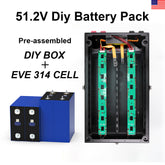

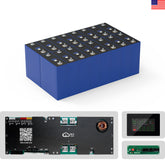

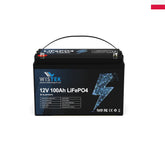
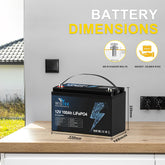

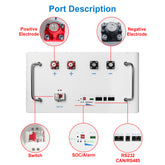
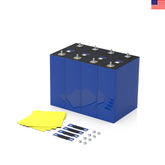
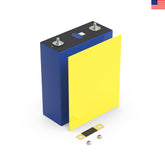
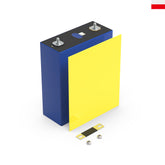

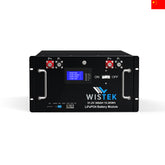
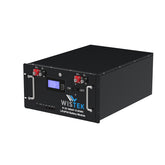
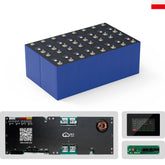








Leave a comment
All blog comments are checked prior to publishing